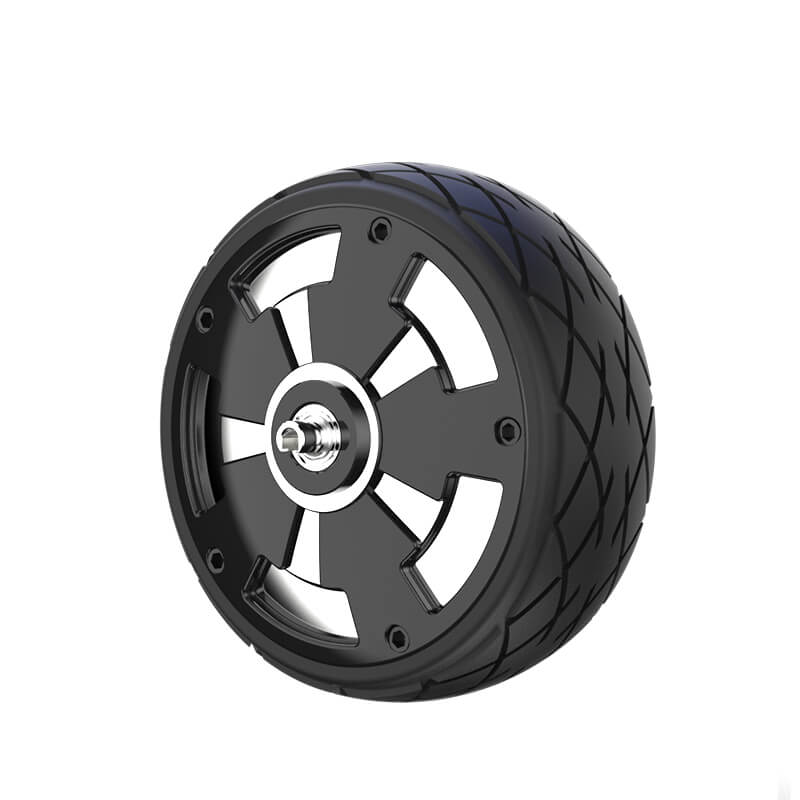The Tiny Giants of Automation: An Introduction to N20 Micro Gear Motors
In the vast universe of engineering, innovation often emerges from the smallest of components. Among these, N20 micro gear motors stand out as incredible marvels that blend compactness with functionality, making them indispensable in modern design and robotics. Their unobtrusive size, roughly 12mm in diameter, conceals a powerhouse capable of delivering reliable power and precision in a surprisingly compact package.

What Are N20 Micro Gear Motors? The term "N20" refers to a specific size classification of small DC gear motors widely used across various industries. These miniature motors are characterized by their cylindrical metallic casing and integrated gear reduction systems, which allow them to convert high-speed rotation into increased torque at lower speeds. The gear modules within these motors are pivotal—they greatly influence the motor's performance, controlling speed, torque, and overall efficiency.
Designed primarily for applications where size constraints are critical, N20 micro gear motors are adaptable across a broad range of projects—from tiny drones to medical devices, and from educational kits to precision robotic arms. They typically operate on a voltage range from 3V to 12V, making them compatible with standard batteries and power supplies.
Design and Components At their core, these motors consist of a small DC motor coupled with a miniature gear train—often composed of spur gears, planetary gears, or worm gears—crafted from metals or plastics. The gears serve to reduce the motor's high rotational speed (often over 20,000 RPM) to a manageable, lower speed with increased torque. This gear reduction not only amplifies torque but also enhances control and positional accuracy when integrated into systems.
The construction of N20 micro gear motors emphasizes durability and smooth operation. They often feature ball bearings for reduced friction and longevity. Despite their size, engineers strive for high efficiency, ensuring minimal power loss and maximized output.
Advantages of N20 Micro Gear Motors The appeal of N20 motors lies in several interrelated advantages:
Compact Size: Their small footprint enables integration into tight spaces—think miniature robots, wearable tech, or embedded systems. Cost-Effective: Their manufacturing complexity keeps them affordable, making them accessible for hobbyists and professional engineers alike. Ease of Integration: Standardized mounting holes, shaft sizes, and power ratings simplify design and replacement. Versatile Applications: Whether used in small conveyors, camera gimbals, or soft robotics, their adaptability is second to none. Customizable Gear Ratios: Options ranging from low to high gear ratios allow users to tailor performance to specific needs.
Applications in Modern Technology These tiny but potent motors have revolutionized numerous sectors:
Robotics: From small-scale educational robots to advanced robotic prosthetics, N20 gear motors provide precision motion and reliable performance. Drones and RC Vehicles: Their lightweight and power efficiency lend themselves perfectly to lightweight aerial and ground vehicles, enhancing flight time and maneuverability. Medical Devices: Micro pumps and surgical tools benefit from their precise control and small footprint. Home Automation and DIY Projects: Makers and hobbyists utilize N20 gear motors in automation systems, smart blinds, or even automatic plant watering systems. Wearable Tech: The miniature size fits seamlessly into wearable devices, offering motion or actuation functionalities without adding bulk.
Choosing the Right N20 Micro Gear Motor Selecting the optimal motor involves balancing several parameters:
Voltage and Current: Ensuring compatibility with your power source. Gear Ratio: Determining the balance between speed and torque. Shaft Type and Length: Matching with your mechanical design. Material and Build Quality: For durability and specific environmental conditions. Noise and Vibration Levels: Especially important in delicate applications like medical devices or audio equipment.
Designers often consult datasheets and vary gear ratios or motor configurations to achieve their ideal performance parameters. The market now offers customizable options, including different gear materials, gear types, and shaft options, providing extensive flexibility.
Challenges and Considerations While N20 micro gear motors are versatile, they aren't without limitations. Their small size can restrict maximum power output, and their gears may wear over time, especially under heavy loads or prolonged use. Furthermore, proper heat dissipation becomes crucial in high-torque applications to avoid overheating.
Despite these considerations, advances in materials and design continuously improve these motors' durability and performance. As technology evolves, so too does the potential for even more compact, efficient, and powerful micro gear motors.
Stay tuned for Part 2, where we’ll delve into innovative applications, customization options, future trends, and how to maximize the potential of N20 micro gear motors in your projects.
Kpower has delivered professional drive system solutions to over 500 enterprise clients globally with products covering various fields such as Smart Home Systems, Automatic Electronics, Robotics, Precision Agriculture, Drones, and Industrial Automation.




































